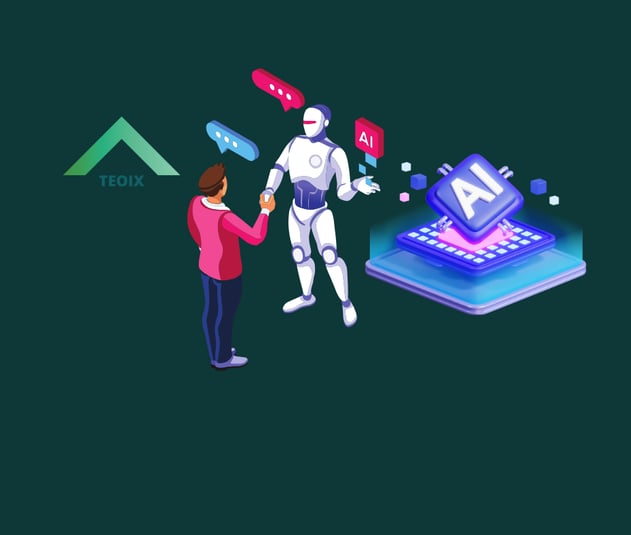Language Generation in AI: Transforming Communication and Creativity
ARTIFICIAL INTELLIGENCE
5/18/20244 min read


Within the subject of artificial intelligence (AI), language production is one of the most active and quickly developing subfields. This technology uses advanced algorithms and large datasets to create writing that is coherent and acceptable for a given context by machines. AI language generation has several useful uses; these include tailored learning aids, creative writing, automated content creation, and customer support.
The Development of AI Language Generation
Early AI research on rule-based systems and basic pattern matching laid the foundation for language production. Although text could be produced by these early systems, the outputs were frequently inflexible and lacked the sophisticated comprehension of human language. The possibilities of AI-generated language underwent a dramatic change with the introduction of machine learning, namely with the advancement of neural networks and deep learning.
The development of long short-term memory (LSTM) networks and recurrent neural networks (RNNs) made it possible to handle sequential data more effectively, which is essential for language processing and generation. These models, however, continued to have trouble keeping coherence throughout lengthy text portions and longer contexts.
The invention of Transformer models, as presented by Vaswani et al. in their landmark 2017 publication "Attention is All You Need," was the game-changer. Transformers significantly increase the effectiveness and performance of language models by processing incoming data in parallel rather than sequentially by utilizing self-attention mechanisms. This breakthrough led to the development of models that pushed the limits of what artificial intelligence (AI) could accomplish in language production, such as GPT (Generative Pre-trained Transformer), BERT (Bidirectional Encoder Representations from Transformers), and eventually GPT-3.
The Operation of Language Generation Models
Pre-training and fine-tuning are the two primary phases of operation for contemporary language generation models, especially those built on the Transformer architecture.
Pre-training:
During this phase, the model learns to predict the following word in a sentence (or, in the case of BERT, masked words) by being exposed to a large corpus of text data. This procedure aids the model in understanding the intricacies of syntax, grammar, and even some facets of meaning and context. The model created during the pre-training stage has a wide-ranging, generic knowledge of language.
Fine-tuning:
Using a smaller, task-specific dataset, the model is adjusted following pre-training. In this stage, the model is customized to carry out specific activities including producing creative writing, summarizing texts, and responding to inquiries. By fine-tuning, the model's accuracy and relevance are increased as it applies its general language knowledge to particular applications.
Language Generation Applications
The adoption of AI language creation has occurred in a number of sectors due to its versatility:
Content Creation:
AI models are capable of producing reports, articles, and even original tales. Human-like text can be produced by programs like OpenAI's GPT-3, which makes it possible to create content for blogs, news sites, and marketing materials automatically. This facilitates the creation of massive amounts of information and expedites the writing process.
Customer service:
Instantaneous, tailored answers to consumer questions are given by chatbots and virtual assistants that are driven by language generation models. The efficiency and happiness of customer service can be increased by these systems' ability to handle common inquiries, solve issues, and even refer more complicated problems to human agents.
Education and Training:
Personalized learning experiences are provided by AI-generated language tools. AI, for example, can generate personalized learning materials, tests, and feedback based on each learner's preferences and requirements. The technology facilitates language acquisition by offering real-time corrections and recommendations for enhancement.
Healthcare:
The creation of comprehensive medical reports, patient summaries, and documentation is aided by AI-generated language. By lessening the administrative load on medical staff, this program enables them to concentrate more on patient care.
Creative Writing and Entertainment: Artificial Intelligence is being utilized more and more in creative fields to produce scripts, music lyrics, and even poetry. These models can work in tandem with human artists, providing fresh perspectives and broadening the boundaries of artistic expression.
Practical and Ethical Difficulties
AI language production is not without its obstacles, both practical and ethical, despite its amazing powers. The possibility of producing false or damaging content is one of the main concerns. Text generated by models such as GPT-3 may seem authoritative, yet it might contain biased or inaccurate information. Strong criteria and continuous research are needed to ensure the accuracy and equity of content generated by artificial intelligence.
The improper application of AI to produce spam, deepfakes, or other harmful information presents another difficulty. Because powerful language models are easily accessible, strict oversight and control measures are required to guard against misuse.
Lastly, because training large language models demands a lot of processing power, it has a big environmental impact. Scholars are currently investigating methods to enhance the energy efficiency and environmental friendliness of these models.
Language Generation's Future
AI language generation has a bright future ahead of it. additional developments in model design, including the creation of ever more complex Transformers and hybrid models, should result in additional gains in the caliber and relevance of generated text. The adaptability of AI applications will be increased by incorporating multimodal capabilities, where models can comprehend and produce words in addition to images, audio, and video.
Furthermore, human-machine cooperation will grow more natural as AI language models are incorporated into everyday life. These technologies will increase human creativity and productivity by providing fresh means of learning, communicating, and innovating.
In summary, AI language creation is a revolutionary technology that is changing the way humans create, communicate, and learn. The potential for AI-generated language to improve society and our lives will only grow as research and ethical issues are resolved, ushering in a new era of intelligent communication.


